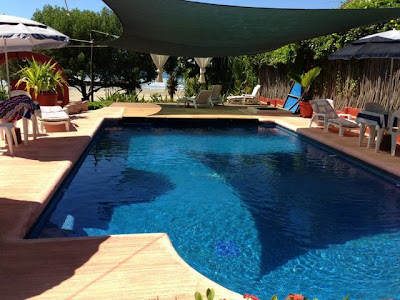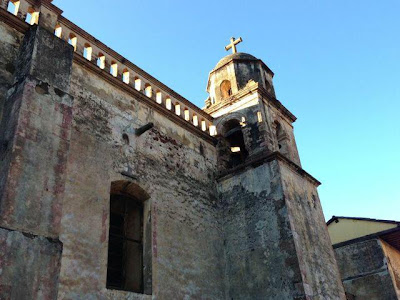From this weekend's The New York Times Travel section,.
Travel writer Jeannie Ralston returns to
Troncones to find it friendly and unspoiled by tourism in this great
article that mentions Casa Delfin Sonriente, our friends ISA Mexico,
Roberto's Bistro and Cafe Sol, and gives you a good picture of this
small town that is both chic and genuine.

Robb Kendrick for The New York Times
The author’s son Jeb, 14, on a boogie board in Troncones, Mexico.
By
JEANNIE RALSTON
Published: April 12, 2013
Planning a return trip to my favorite beach in the world, I was almost
as apprehensive as I was excited. The last time I visited Troncones — a
town of some 600 people pushed up against the Sierra Madre del Sur
mountains on the Pacific coast of Mexico — was five years earlier. At
the time, we’d been living in San Miguel de Allende, and we occasionally
drove down with our two sons and two dogs. My husband — an avowed
“non-beach guy” — and I had come to love this village of farmers and
fishermen for its rawness, its drowsy authenticity.
In the intervening years, word got out that Julian Schnabel and Damien
Hirst had homes in the area. That’s it, I thought, as I prepared for our
vacation this past January. I was picturing all the practitioners of
extreme cool who had surely followed in their wake. How was it possible
that any place could thrive in the oxymoronic state of both newly chic
and genuine? I figured we’d better get there quickly before it became
totally overrun and turned into just any other beach town.
Our apprehension wasn’t helped by a new highway on the way north from
the Zihuatanejo airport (this time we flew in from our home in Texas
with our teenage sons and, alas, no dogs). We worried the highway was,
uh, paving the way for high-rises and Señor Frog’s tequila shot contests
in Troncones.
Thankfully, when we got off the highway, about 22 miles from
Zihuatanejo, we were surrounded by nothing but tropical forest. In town,
we found a chicken running on the dirt road in front of the same dusty
tienditas and hand-painted hotel and restaurant signs we remembered.
There was no trace of the dreaded stalls selling T-shirts and seashell
fridge magnets or parasails pulled by boats crisscrossing the sky.
After we checked out our room at
Casa Delfin Sonriente,
an open-air suite with mosquito-netted beds, we ran to the wide,
rock-strewn beach to greet the wild surf that has drawn surfers here for
years. The waves are exploding tubes of ocean that make a
near-Nascar-decibel crack when they break. Scanning the shoreline, we
spotted no Jack-and-the-Beanstalk buildings poking over the palms.
Mostly we saw a long smear of vegetation. The few visible structures —
homes and hotels — barely showed their foreheads, and many of those
low-slung buildings had palapa roofs that blended in seamlessly. None of
the houses had an ostentatious feel that suggested it might belong to
an international art star.
On the first of what would be twice-daily walks, however, we noticed a
large construction site. “Condos,” one of the workmen told us. Just as I
feared. We later learned that the complex would have only five units
and be two stories high. The notion that there were other people — this
developer included — who wanted to keep Troncones real was a supreme
relief.
As we walked on, we were happy to see lots of dogs, most with their
owners, but many out on their own, and all without leashes. For us, the
freedom afforded dogs is emblematic of the larger ease here. Dogs are
welcome at many restaurants and hotels. Last time, our dogs had slept
under our bed and tagged along everywhere.
To compensate for our missing canine wingmen this trip, we made friends
with a few dogs on the beach, including a white bulldog that regally
surveyed the wave-skimming patrols of pelicans in the morning. In the
evening, he’d be out eyeing the troops of horses and riders (often with a
colt following its mother) that trotted along the shore.
On our walks — more than two miles round trip — we were relieved to find
the beach mostly empty, even at prime-time hours. “It’s 4 o’clock, and
we’ve passed what — 60 people?” my husband asked after one outing. We
considered this good news, but that night at dinner a man who visits
regularly from Seattle said he was feeling crowded. “It used to be
there’d only be five people on the beach with you,” he said.
Another day at the same pizza place, Café Sol, we met a couple from the
Yukon. Over the course of their month in Troncones, they had sampled
many restaurants. I asked about the Inn at Manzanillo Bay, whose intriguing menu I had seen online. “It’s pricey and a little too fine for Troncones,” the wife said.
Despite our fears that it might be one of those fancier-than-thou spots,
we tried it ourselves. Fortunately, the poolside restaurant (and
adjoining hotel) proved that a touch of sophistication (groomed grounds,
California-trained chef) doesn’t trump the Troncones character. It also
demonstrated that “expensive” in Mexico is completely relative. Wearing
our bathing suits on the patio, we ate Thai shrimp tacos and an ahi
tuna sandwich as we watched surfers bob in Manzanillo Bay. For the four
of us, lunch came to less than 800 pesos (about $66 at 12 pesos to the
dollar).
Other favored spots tended to have palapa roofs, plastic chairs and
vinyl tablecloths. At Doña Martha, on nearby Playa Majahua, freshly
caught oysters are kept in tidal pools till ordered. Another beachfront
spot, Roberto’s Bistro, offered a superb break from seafood. My husband
(a Texan!) declared that Roberto’s vacío steak — a cut from Argentina —
was the best steak he had ever tasted.
Our waiter at Roberto’s informed us that we had missed the restaurant’s
weekly Mexican folklore show by one day. He showed us photos of dancers
wearing flounces and colorful ribbons. As the days went by, I decided
one of the biggest changes in Troncones was the number of such arranged
activities: Live salsa music at bars, bird-watching, eco-tours into the
mountains, painting lessons on the beach at an art house called Casa
Creativa. Then there was yoga at the lovely Present Moment Retreat, a
hotel that was relaxed enough to allow its resident canine, Bodhi (the
bulldog we befriended on the beach), to hang out with the class, showing
us how downward dog is properly done.
Mostly, though, we kept to the activities we had come to love on earlier
visits — cantering on horses over wet sand made pink by the vanishing
sun, and playing in that alluring surf. We needed only to stretch out on
our (hotel-provided) boogie boards in front of a just-broken wave, and
the frothing force would speed us shoreward.
After watching many surfers ply their craft near us, it wasn’t long
before the boys wanted to go beyond the boogie board. That’s when I
called Mike Linn of ISA Mexico (a k a Tsunami Surf) for a lesson and.
Feeling brave, I made it for all four of us.
Mike, a California native who started coming to Troncones 15 years ago,
picked us up at our hotel in his mud-spattered truck with its rack of
surfboards. Asked about changes he’s seen, he said, “The biggest thing
right now is that they’re paving this road.”
“With this dirt road, it can’t be a year-round resort,” he added. “In
the rainy season,” July through October, “all of this is mud.”
Mike seemed less concerned than I was that the special unvarnished
flavor of Troncones was going to be lost. “It would be hard for it to
become a big resort with high-rises and all that,” he said, explaining
that its growth is limited because much of the land is owned by an ejido
(a land cooperative), which makes development more difficult. I later
learned that a municipal statute limits building height to no more than
three stories.
At the next beach, Majahua, we left the road, and soon Mike was
demonstrating the mechanics of surfing. After we all floundered in the
surf a while, one son, then the other, got the hang of it.” My husband
and I took more time, but when I finally slid onto the beach upright, I
pumped my arms in the air — and then promptly went down like a bowling
pin.
It was when I went to pay Mike that I got the clear reassurance I had
been looking for, even though it was a bit inconvenient. I opened my
wallet and realized I hadn’t brought enough cash. Mike told me the
nearest A.T.M. was 20 minutes away in the anti-Troncones: overgrown
Ixtapa. He saved me by allowing me to pay later via PayPal.
What up-and-coming tourist destination doesn’t have dozens of A.T.M.’s?
One that is (I hope) determined to remain the small, delightful
surf-and-slack town it always has been.



























































